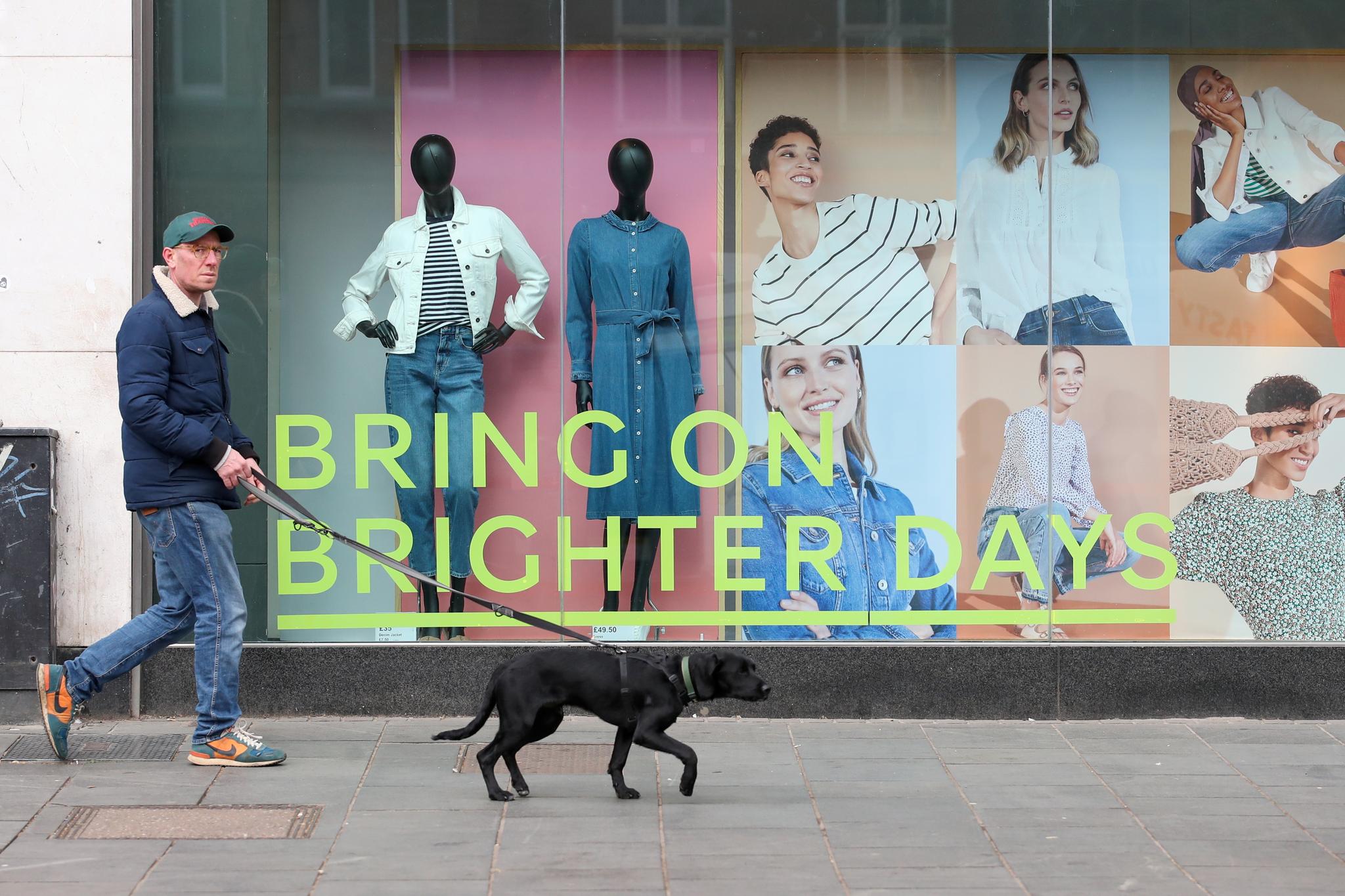
LONDON (Reuters) – After more than three months of enforced closure due to the COVID-19 pandemic, non-essential stores in England reopen their doors on Monday, hoping that the escape from lockdown will fuel a trading boom.
Industry lobby group, the British Retail Consortium, estimates UK stores have lost 27 billion pounds ($37 billion) in sales over three lockdowns, while 67,000 retail jobs were shed in 2020 alone.
Some 17,532 chain store outlets vanished from high streets, shopping centres and retail parks across the UK last year, according to data compiled by researcher the Local Data Company for accountancy firm PwC.
But with more than half of the UK’s adult population having received at least one of the vaccine’s two doses, analysts do not think shoppers will hold back.
Market researcher Kantar is forecasting that consumers will spend 3.9 billion pounds ($5.3 billion) on the high street in the first week of reopening.
“There was definitely a bounce at the end of the lockdown last year (in June), I would be surprised if the same thing didn’t happen again,” Simon Wolfson, CEO of fashion retailer Next, told Reuters.
Many shopping areas will look very different from their pre-pandemic state. A raft of chains, including fashion retailers Topshop, Topman, Burton, Oasis and Laura Ashley, which had been fixtures for decades, will not be there – high profile casualties of a crisis that has hammered the sector.
Eight John Lewis department stores will not reopen and Debenhams stores will only reopen to hold final closing sales.
England’s non-essential stores have been closed since Jan. 4 when Prime Minister Boris Johnson imposed a third lockdown to stem a surge in COVID-19 cases.
Non-essential retail will also reopen in Wales on Monday, though Scotland’s shops will have to wait until at least April 26. Northern Ireland does not have a date yet.
PENT-UP DEMAND
Getting shoppers spending again is key to Britain’s recovery after official data last month showed that 2020 was the worst year for its economy in more than three centuries.
Analysts reckon the customer bounce-back could be more pronounced than the one last June.
“Lockdowns clearly improve the average family P&L, and many will be thinking that they won’t be going on an overseas holiday this year. Shoppers have money to spend, and most people haven’t shopped fashion for nearly two years,” said analysts at Peel Hunt.
Roger Whiteside, CEO of baker Greggs, reckons the sector will benefit from pent-up demand.
While Greggs stores were allowed to trade through the latest lockdown, he is hoping for a boost to high street footfall from the relaxation in restrictions.
“There’ll be queues outside the shops that people can’t access easily online, so Primark’s a good example,” he said.
To help the sector cope with the challenge of social distancing regulations, which are scheduled to remain in place until June 21, the government is allowing extended opening hours. It said last month that shops can open until 10 p.m. from Monday to Saturday.
($1 = 0.7294 pounds)
Reporting by James Davey; Editing by Raissa Kasolowsky
Image: FILE PHOTO: A man walks a dog in front of a closed retail unit ahead of next week’s planned reopening, amid the outbreak of the coronavirus disease (COVID-19) in St Albans, Britain, April 8, 2021. REUTERS/Peter Cziborra/File Photo




